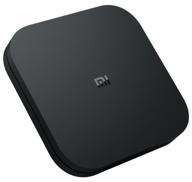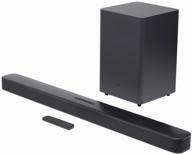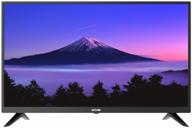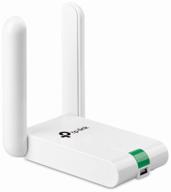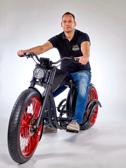
Review on 📺 Full Motion TV Wall Mount by Mount-It! - Long Arm TV Mount with 24 Inch Extension, Ideal for 32 to 55 Inch TVs, VESA 400 x 400 Compatible, Supports up to 77 Lbs by Jeremy Choi

Reliable mounting, it is easy to hang the TV. Rotates 90 degrees to the wall. It has lateral height adjustment.
Good mount for the money. It uses the most convenient design of attaching two vertical bars to the back of the TV, attaching the bracket to the wall, and then lifting the TV onto the bracket. The vertical arms have notches that hook into the top of the bracket. That supports the TV and you can let it go. You complete the installation by tightening the screws on the vertical arms that attach them to the bottom of the bracket. All fasteners to attach the wall mount and TV to the mount are included; Wall mounting screws, washers and concrete anchors for those who need them TV screws of most common sizes (5 different sets), 8 pcs. 3/16" washers and 8 9/16" washers for those with curved screens or bulges on the back of the TV between the mounting holes. They fit most TVs, but really fancy models from manufacturers who don't care what problems they cause. You may need to obtain additional screws. The kit includes a small wrench for wall screws and leveling screws, and an Allen key for fore/aft tilting. Because the last 2 1/8" of the bracket rotates, a 90 degree rotation will place the center of the bracket 21 7/8" from the wall. This means a TV that is 43 3/4" wide or smaller, centered, can rotate a full 90 degrees. With 400mm mounting holes, the TV will need to be centered. A TV with 300mm holes can rotate almost 2 inches from center, allowing a TV up to 47 5/8" wide to rotate 90 degrees, and a TV with 200mm holes to be offset nearly 4 inches, allowing a TV with a width of 51 5/8" can be rotated 90 degrees. To adjust the TV sideways after installation, slightly loosen the four 10mm screws that secure the plate to the end of the TV mount. Level the TV and then tighten the four screws. DO NOT FIX TV mount that slides out of the wall to plaster! If you need to mount the TV between studs or paneling on a concrete wall covered with paneling and drywall, get a piece of plywood 3/4 inch wide enough that you can screw it to two studs or strips of cladding , and is at least 11 inches tall (the taller the better, as long as the TV covers it). Paint it the same color as the wall if you're worried about the look. Attach to the uprights with at least 3 screws in the top third and at least one screw in the bottom third, use 2 1/2" screws or longer (use 3 1/4" Tapcon screws for drywall and batten strip above the Attach the bracket to the plywood with 3/16" screws at least 1 1/4" long. If using the screws provided, use spacers to prevent the unthreaded portion of the screw from poking the plywood. So you can screw it onto two studs or strips of shroud and be at least 11 inches tall (the taller the better if the TV covers it). Paint it the same color as the wall if you're worried about the look. Attach to the uprights with at least 3 screws in the top third and at least one screw in the bottom third, use 2 1/2" screws or longer (use 3 1/4" Tapcon screws for drywall and batten strip above the Attach the bracket to the plywood with 3/16" screws at least 1 1/4" long. If using the screws provided, use spacers to prevent the unthreaded portion of the screw from poking the plywood. So you can screw it onto two studs or strips of shroud and be at least 11 inches tall (the taller the better if the TV covers it). Paint it the same color as the wall if you're worried about the look. Attach to the uprights with at least 3 screws in the top third and at least one screw in the bottom third, use 2 1/2" screws or longer (use 3 1/4" Tapcon screws for drywall and batten strip above the Attach the bracket to the plywood with 3/16" screws at least 1 1/4" long. If using the screws provided, use spacers to prevent the unthreaded portion of the screw from poking the plywood.
- Electronics
- Quick instructions
New products
Comments (0)
Top products in 📺 Television Accessories
Another interesting products

TV Tuner LUMAX DV-2120HD

15 Review
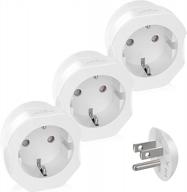
VINTAR EU To US Plug Adapter 3-Pack For Easy Travel: Europe To USA Converter For Spain, France, And More, Compatible With Type C/E/F Plugs - European To US Power Adapter Solution

11 Review
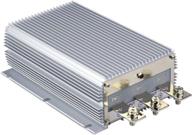
DC/DC 12V To 24V Boost Converter 40A 960W - Waterproof Voltage Regulator Module For Car Power Supply (10V-16V Input)

15 Review
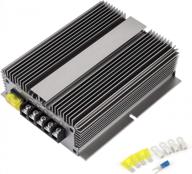
HOMELYLIFE 600W High Power Voltage Reducer DC 48V 60V 72V Step Down To DC 12V 50A Buck Converter Waterproof Module Car Truck Power Regulator Transformer

12 Review


